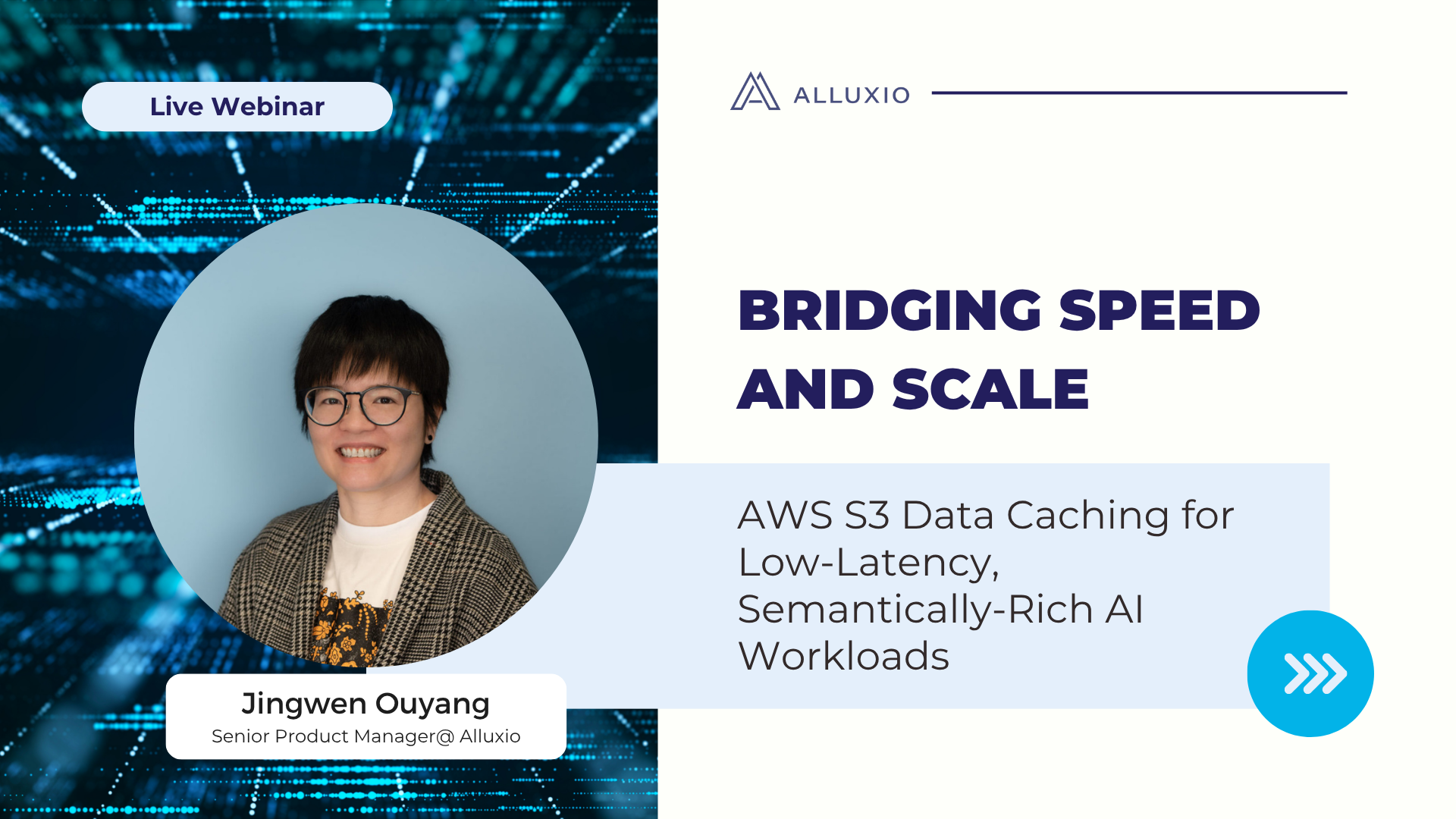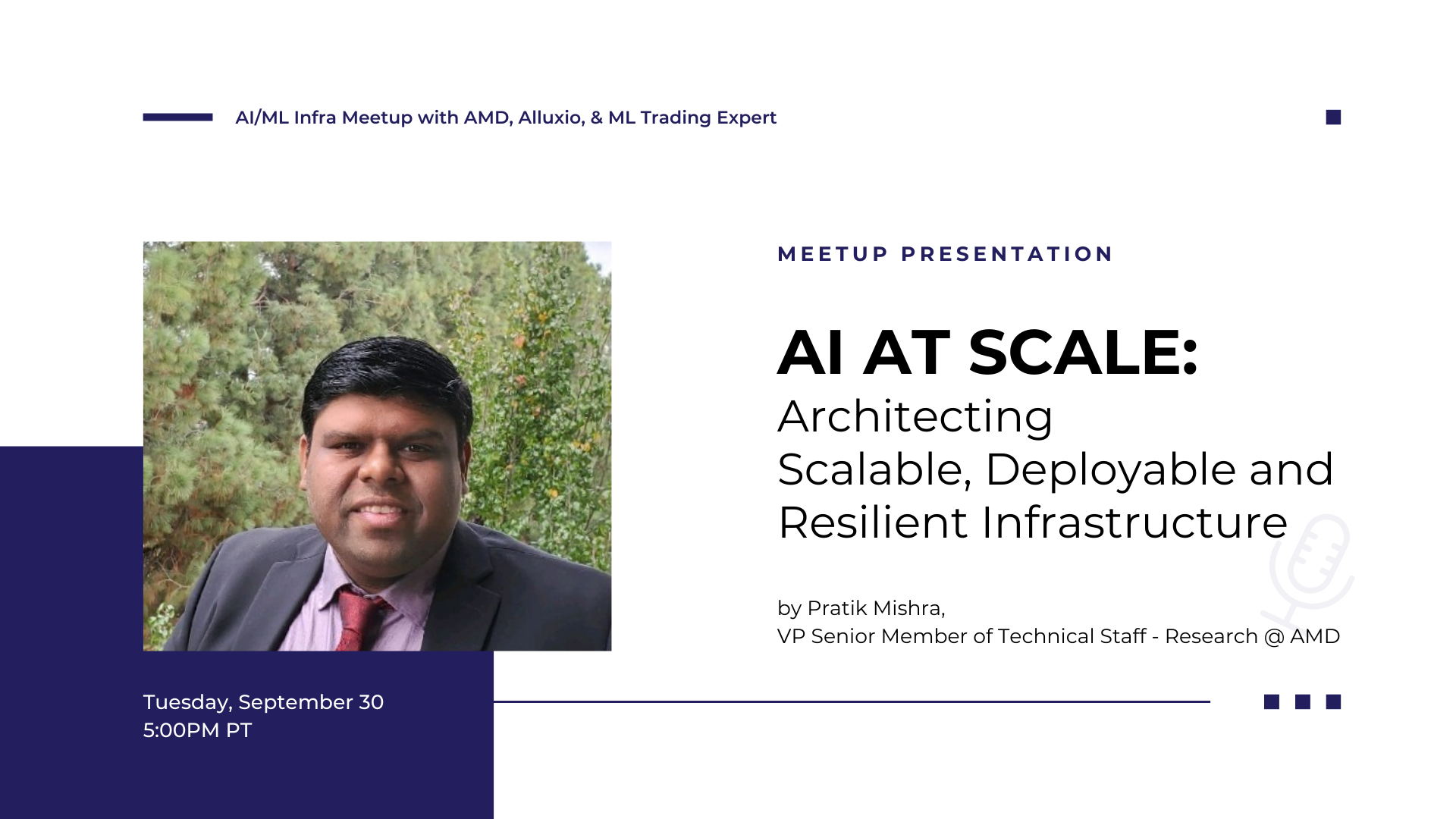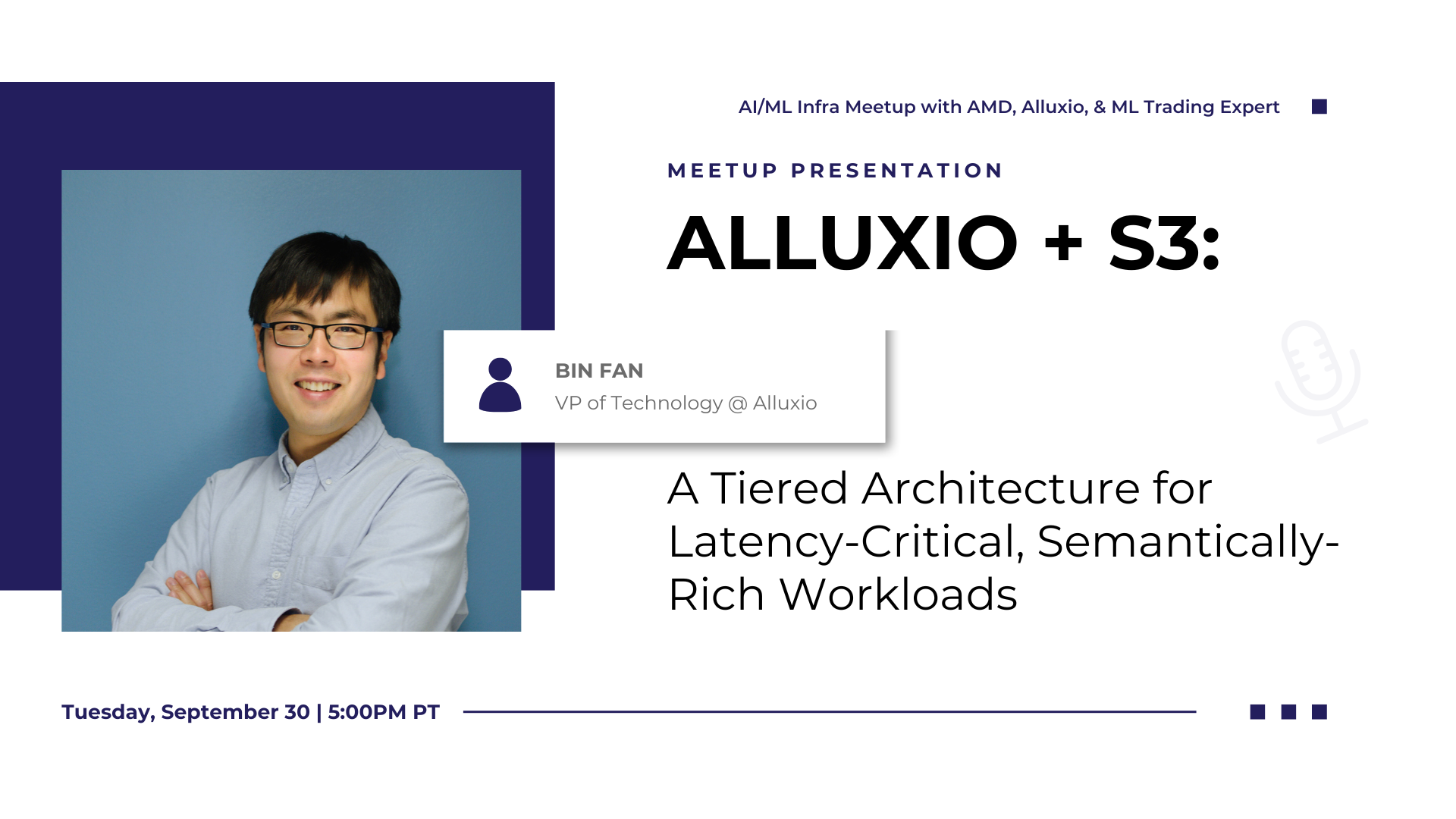Products
Bursting Spark or Presto Jobs to AWS using Alluxio
June 23, 2020
The hybrid cloud model, where cloud resources run Spark or Presto jobs against data stored on-premises, is an appealing solution to reduce resource contention in on-premise environments while also saving in overall costs. One key flaw in a hybrid model is the overhead associated with transferring data between the two environments. Data and metadata locality within the compute application must be achieved in order to maintain the similar performance of analytics jobs as if the entire workload was run on-premises.
In this office hour, we demonstrate how a “zero-copy burst” solution helps to speed up Spark and Presto queries in the public cloud while eliminating the process of manually copying and synchronizing data from the on-premise data lake to cloud storage. This approach allows compute frameworks to decouple from on-premise data sources and scale efficiently by leveraging Alluxio and public cloud resources such as AWS.
We will cover:
- Typical challenges of moving data to the cloud and expanding compute capacity.
- Details about “zero-copy” hybrid cloud solution for burst computing
- A demo of running Presto analytic queries using remote on-prem HDFS data with Alluxio deployed in AWS EMR
The hybrid cloud model, where cloud resources run Spark or Presto jobs against data stored on-premises, is an appealing solution to reduce resource contention in on-premise environments while also saving in overall costs. One key flaw in a hybrid model is the overhead associated with transferring data between the two environments. Data and metadata locality within the compute application must be achieved in order to maintain the similar performance of analytics jobs as if the entire workload was run on-premises.
In this office hour, we demonstrate how a “zero-copy burst” solution helps to speed up Spark and Presto queries in the public cloud while eliminating the process of manually copying and synchronizing data from the on-premise data lake to cloud storage. This approach allows compute frameworks to decouple from on-premise data sources and scale efficiently by leveraging Alluxio and public cloud resources such as AWS.
We will cover:
- Typical challenges of moving data to the cloud and expanding compute capacity.
- Details about “zero-copy” hybrid cloud solution for burst computing
- A demo of running Presto analytic queries using remote on-prem HDFS data with Alluxio deployed in AWS EMR
Videos:
Presentation Slides:
Complete the form below to access the full overview:
.png)
Videos
Bridging Speed and Scale: AWS S3 Data Caching for Low-Latency, Semantically-Rich AI Workloads

Amazon S3 and other cloud object stores have become the de facto storage system for organizations large and small. And it’s no wonder why. Cloud object stores deliver unprecedented flexibility with unlimited capacity that scales on demand and ensures data durability out-of-the-box at unbeatable prices.
Yet as workloads shift toward real-time AI, inference, feature stores, and agentic memory systems, S3’s latency and limited semantics begin to show their limits. In this webinar, you’ll learn how to augment — rather than replace — S3 with a tiered architecture that restores sub-millisecond performance, richer semantics, and high throughput — all while preserving S3’s advantages of low-cost capacity, durability, and operational simplicity.
We’ll walk through:
- The key challenges posed by latency-sensitive, semantically rich workloads (e.g. feature stores, RAG pipelines, write-ahead logs)
- Why “just upgrading storage” isn’t sufficient — the bottlenecks in metadata, object access latency, and write semantics
- How Alluxio transparently layers on top of S3 to provide ultra-low latency caching, append semantics, and zero data migration with both FSx-style POSIX access and S3 API access
- Real-world results: achieving sub-ms TTFB, 90%+ GPU utilization in ML training, 80X faster feature store query response times, and dramatic cost savings from reduced S3 operations
- Trade-offs, deployment patterns, and best practices for integrating this tiered approach in your AI/analytics stack
October 28, 2025
AI/ML Infra Meetup | AI at scale Architecting Scalable, Deployable and Resilient Infrastructure

Pratik Mishra delivered insights on architecting scalable, deployable, and resilient AI infrastructure at scale. His discussion on fault tolerance, checkpoint optimization, and the democratization of AI compute through AMD's open ecosystem resonated strongly with the challenges teams face in production ML deployments.
September 30, 2025
AI/ML Infra Meetup | Alluxio + S3 A Tiered Architecture for Latency-Critical, Semantically-Rich Workloads

In this talk, Bin Fan, VP of Technology at Alluxio, presents on building tiered architectures that bring sub-millisecond latency to S3-based workloads. The comparison showing Alluxio's 45x performance improvement over S3 Standard and 5x over S3 Express One Zone demonstrated the critical role the performance & caching layer plays in modern AI infrastructure.
September 30, 2025
